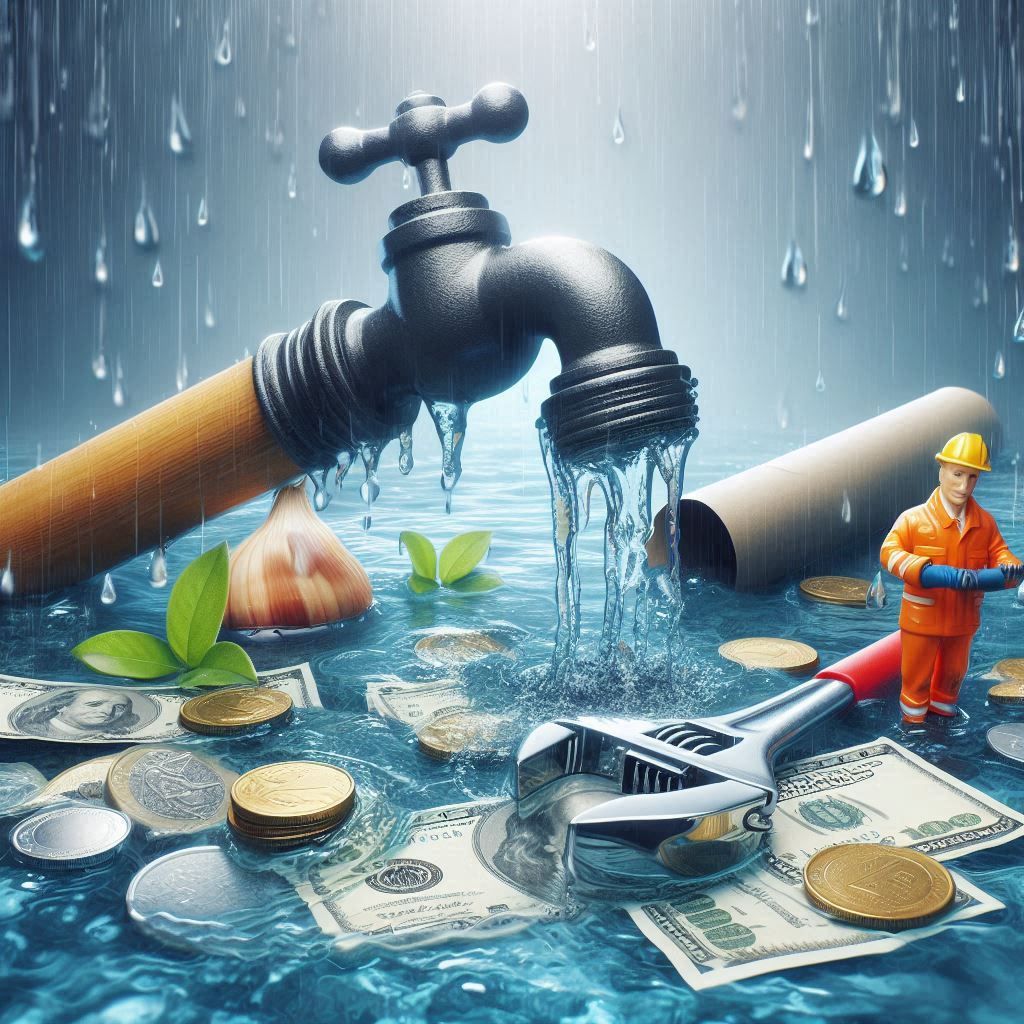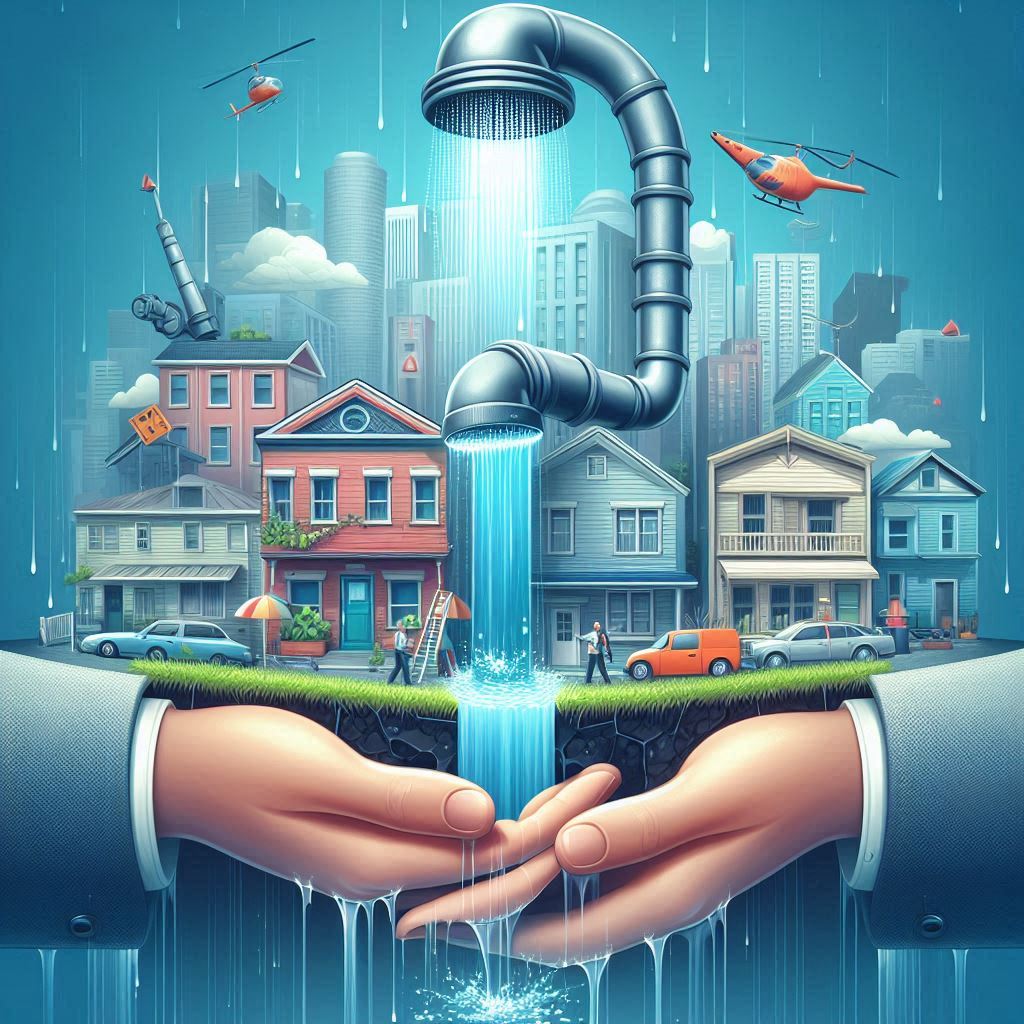Introduction



Water leak damage is a common and costly problem for homeowners. A small leak can quickly escalate, causing extensive damage to your property and belongings. The financial burden of repairs can be overwhelming, but having the right water leak ihttps://featurefilm.online/wp-admin/post.php?post=3061&action=editnsurance can offer much-needed protection.
Understanding your insurance policy and coverage is crucial to ensure you receive the maximum compensation for your water leak damage. This comprehensive guide will walk you through the claims process, provide tips for maximizing your claim success, and help you navigate the complexities of water lehttps://www.leaktracersdirect.co.uk/how-to-make-a-successful-water-leak-insurance-claim/ak insurance.
A. The Prevalence of Water Leak Damage and Its Financial Impact
Water leaks can occur for various reasons, including burst pipes, faulty appliances, or even natural disasters. Regardless of the cause, the consequences can be severe. Water damage can lead to structural issues, mold growth, and the destruction of personal property. The cost of repairs can quickly add up, leaving homeowners with a significant financial burden.
According to recent studies, water damage is one of the most common insurance claims, accounting for billions of dollars in losses each year. The average cost of a water damage claim can range from a few thousand dollars to tens of thousands of dollars, depending on the severity of the damage.
B. The Importance of Understanding Your Insurance Policy and Coverage

Table of Contents
Having the right water leak insurance can provide peace of mind and financial security in the event of unexpected water damage. However, not all insurance policies are created equal. It’s essential to understand the specifics of your coverage, including the types of water damage covered, any exclusions or limitations, and the claims process.
Some insurance policies may only cover sudden and accidental water leaks, while others may offer broader coverage, including leaks caused by wear and tear or gradual damage. Additionally, some policies may have exclusions for certain types of water damage, such as flooding or sewage backups.
C. Overview of the Claims Process and Steps to Maximize Your Claim Success
The claims process can be complex and time-consuming, but understanding the steps involved can help ensure a smoother and more successful outcome. Here’s an overview of the typical water leak insurance claims process:
- Document the damage: Take photos and videos of the water damage and any affected property.
- Mitigate further damage: Take steps to prevent further damage, such as turning off the water supply or removing standing water.
- Contact your insurance company: Notify your insurance company of the damage as soon as possible.
- File a claim: Provide your insurance company with all necessary documentation, including photos, videos, and repair estimates.
- Work with an adjuster: An insurance adjuster will assess the damage and determine the amount of compensation you are entitled to.
- Receive payment: Once the claim is approved, you will receive payment for the covered damages.
By following these steps and working closely with your insurance company, you can maximize your chances of a successful water leak insurance claim.pen_sparktunesharemore_vert
Understanding Your Water Leak Insurance Policy: A Crucial Step for Successful Claims
Before filing a water leak insurance claim, it’s vital to understand the nuances of your policy. This knowledge will help you determine what’s covered, avoid surprises, and ensure a smoother claims process.
A. Types of Water Damage Covered (Sudden vs. Gradual Leaks)

Water leak insurance policies typically distinguish between sudden and accidental leaks versus gradual leaks caused by wear and tear.
- Sudden and accidental leaks: These are usually covered by standard policies. Examples include burst pipes, appliance malfunctions, or accidental overflows.
- Gradual leaks: Coverage for these leaks may vary depending on your policy. Some policies might exclude them altogether, while others might offer limited coverage or require additional endorsements.
B. Exclusions and Limitations in Your Policy
Insurance policies often have exclusions and limitations that specify what’s not covered. Common exclusions for water leak insurance claims include:
- Flood damage: This is typically excluded and requires separate flood insurance.
- Earth movement: Damage caused by earthquakes, landslides, or sinkholes is usually not covered.
- Neglect or lack of maintenance: If the leak is due to your failure to maintain your property, your claim might be denied.
C. Additional Coverage Options (Sewer Backup, Mold Remediation)
You might have the option to add endorsements to your policy for additional coverage, such as:
- Sewer backup coverage: This covers damage caused by backed-up sewage or drains.
- Mold remediation coverage: This covers the cost of removing and repairing mold damage resulting from a covered water leak.
D. Policy Deductible and Its Impact on Your Claim
The deductible is the amount you must pay out of pocket before your insurance coverage kicks in. Your deductible can significantly impact your claim, so it’s important to understand how it works.
For example, if your deductible is $1,000 and your water leak damage amounts to $5,000, you would be responsible for paying the first $1,000, and your insurance company would cover the remaining $4,000.
Understanding your policy’s deductible will help you decide whether it’s worth filing a claim for smaller losses. If the cost of repairs is less than or close to your deductible, it might be more financially beneficial to pay for the repairs yourself.
By thoroughly reviewing your water leak insurance policy and understanding these key aspects, you can confidently navigate the claims process and maximize your chances of a successful outcome.
Preparing for a Water Leak Insurance Claim: Essential Steps for a Smooth Process
When faced with water leak damage, taking swift and decisive action can significantly impact the success of your insurance claim. Properly preparing for the claim involves two crucial aspects: documenting the damage and mitigating further losses.
A. Documenting the Damage: Creating a Strong Foundation for Your Claim
Thorough documentation of the water damage serves as vital evidence for your insurance company. It helps them assess the extent of the damage and determine the appropriate compensation.
- Photos and Videos of the Affected Areas:
- Capture clear and detailed images of all areas affected by the water leak, including walls, floors, ceilings, and personal belongings.
- Use a camera or smartphone to document the damage from multiple angles, ensuring proper lighting for optimal visibility.
- If possible, take videos to provide a more comprehensive view of the damage.
- Detailed Descriptions of Damaged Items and Estimated Values:
- Create a detailed inventory of all damaged items, including furniture, appliances, electronics, and personal belongings.
- For each item, provide a description, estimated value, purchase date, and any relevant receipts or documentation.
- If you’re unsure about the value of an item, consult with a professional appraiser or use online resources to research comparable items.
B. Mitigating Further Damage: Protecting Your Property and Minimizing Losses
Once the water leak is discovered, taking immediate action to mitigate further damage is crucial. This demonstrates to your insurance company that you’ve taken reasonable steps to protect your property and minimize losses.
- Stop the Water Source: If possible, locate the source of the leak and turn off the water supply to the affected area. This will prevent further water damage and reduce the overall cost of repairs.
- Remove Standing Water: Use a wet/dry vacuum, towels, or mops to remove standing water from floors and surfaces. This will help prevent mold growth and further damage to your property.
- Dry Out Affected Areas: Use fans, dehumidifiers, or open windows to help dry out wet areas. This will speed up the drying process and reduce the risk of mold.
- Salvage Belongings: Carefully remove any salvageable items from the affected area and place them in a dry, safe location. This will help prevent further damage and allow for proper cleaning and restoration.
- Contact a Professional: If the damage is extensive or you’re unsure how to proceed, contact a professional water damage restoration company. They can assess the damage, remove water, dry out affected areas, and begin the restoration process.
By documenting the damage thoroughly and taking swift action to mitigate further losses, you can strengthen your water leak insurance claim and ensure a smoother and more successful outcome.
Mitigating Water Damage: Essential Steps for Water Leak Insurance Claims
Taking swift action to minimize water damage after a leak is crucial for both protecting your property and ensuring a successful water leak insurance claim. Here’s how to mitigate damage and start the claims process:
1. Stopping the Leak Source (If Possible):
- Locate the Source: Identify the origin of the leak, whether it’s a burst pipe, a faulty appliance, or a leaking roof.
- Shut Off Water Supply: If you can safely access the main water valve, turn it off to stop the flow of water and prevent further damage. If you cannot turn off the main water valve or the leak is from an external source like a roof, contact a plumber for immediate assistance.
2. Removing Water and Drying Out the Affected Areas:
- Remove Standing Water: Use a wet/dry vacuum, mops, towels, or buckets to remove as much water as possible from floors, carpets, and other surfaces.
- Dry Out Affected Areas: Open windows, use fans, and run dehumidifiers to promote air circulation and accelerate the drying process. Consider removing wet carpets and padding if they cannot be adequately dried.
- Professional Assistance: If the water damage is extensive, consider hiring a professional water damage restoration company. They have specialized equipment and expertise to quickly and effectively remove water and dry out affected areas.
3. Protecting Undamaged Items from Further Exposure:
- Move Furniture and Belongings: Relocate furniture, appliances, and other items away from wet areas to prevent further damage.
- Elevate Items: Place items on blocks or shelves to keep them above any residual moisture.
- Cover Items: Use plastic sheets or tarps to protect furniture, electronics, and other valuables from water damage.
C. Identifying and Contacting Your Insurance Provider:
- Review Your Policy: Locate your water leak insurance policy documents and review the terms and conditions, including coverage details, deductibles, and claims procedures.
- Contact Your Insurance Provider: Call your insurance company’s claims hotline as soon as possible to report the water damage. Provide them with your policy number and a brief description of the incident.
- Follow Instructions: The insurance company will guide you through the claims process, including scheduling an inspection and providing necessary documentation.
By taking these steps to mitigate water damage and promptly notifying your insurance provider, you can ensure a smoother claims process and increase the likelihood of receiving adequate compensation for your losses.
Filing Your Water Leak Insurance Claim: A Step-by-Step Guide

After taking the necessary steps to mitigate damage, it’s time to formally file your water leak insurance claim. This process ensures that your losses are assessed and compensated appropriately.
A. Initiating the Claims Process with Your Insurance Provider
- Contact Your Insurer Promptly: Reach out to your insurance company as soon as possible after discovering the water leak. Most insurers have 24/7 claims hotlines or online portals for reporting claims.
- Provide Essential Information: Be prepared to share your policy number, contact details, and a brief description of the incident, including the date, time, and location of the leak.
B. Providing All Necessary Documentation (Photos, Videos, Descriptions)
- Submit Visual Evidence: Share the photos and videos you took while documenting the damage. These visuals offer a clear representation of the extent and severity of the water damage.
- Provide Detailed Descriptions: Submit the inventory of damaged items, including descriptions, estimated values, purchase dates, and any relevant receipts or warranties.
- Include Repair Estimates: If you have already obtained repair estimates from contractors, include those as well.
C. Cooperating with the Insurance Adjuster’s Investigation
- Schedule an Inspection: The insurance company will typically send an adjuster to assess the damage in person. Be available for the inspection and provide any additional information or access the adjuster may need.
- Answer Questions Truthfully: Respond honestly to any questions the adjuster may have about the leak, the damage, and your mitigation efforts.
- Provide Additional Documentation: If requested, provide any additional documentation, such as receipts for repairs or replacements already made.
D. Keeping Detailed Records of All Communications and Expenses
- Maintain a Claim Log: Keep a detailed record of all interactions with your insurance company, including names, dates, times, and summaries of conversations.
- Track Expenses: Keep receipts for any expenses related to the water damage, such as temporary housing, repairs, or replacement of damaged items. These records will be helpful for reimbursement claims.
- Save Correspondence: Save all emails, letters, and other communication from your insurance company related to the claim.
By following these steps and maintaining open communication with your insurance provider, you can ensure a smoother and more successful water leak insurance claim process. Remember, patience and persistence are key, as it may take some time for your claim to be processed and resolved.
Working with the Insurance Adjuster: A Crucial Phase in Your Water Leak Insurance Claim
Once you’ve filed your water leak insurance claim, the insurance company will assign an adjuster to evaluate the damage and determine the compensation amount. Understanding the adjuster’s role and effectively interacting with them is crucial for a successful claim resolution.
A. Understanding the Adjuster’s Role and Responsibilities
- Assessing the Damage: The adjuster’s primary responsibility is to inspect the property, assess the extent of the water damage, and determine the cause of the leak.
- Estimating Repair Costs: Based on their assessment, the adjuster will estimate the cost of repairs or replacement of damaged items.
- Determining Coverage: The adjuster will review your insurance policy to confirm the coverage for the specific type of water damage and any applicable exclusions or limitations.
- Negotiating Settlement: The adjuster will work with you to negotiate a fair settlement amount that covers the cost of repairs and any additional expenses incurred due to the water damage.
B. Reviewing the Adjuster’s Damage Assessment and Estimate
- Obtain a Copy of the Estimate: Request a copy of the adjuster’s damage assessment and repair estimate. Review it carefully and compare it to your own documentation and estimates.
- Ask Questions: If you have any questions or concerns about the adjuster’s assessment, don’t hesitate to ask for clarification.
- Challenge Discrepancies: If you disagree with the adjuster’s assessment or estimate, be prepared to provide evidence to support your position.
C. Negotiating for Fair Compensation for Your Losses
- Be Prepared: Gather all supporting documentation, including repair estimates, receipts, and photos, to strengthen your case.
- Be Assertive: Don’t be afraid to negotiate for a fair settlement that adequately covers your losses. Remember, the adjuster’s initial offer may not be the final offer.
- Seek Professional Help: If you’re struggling to reach an agreement with the adjuster, consider hiring a public adjuster or an attorney specializing in insurance claims.
D. Addressing Any Discrepancies or Disagreements with the Adjuster
- Document Everything: Keep a record of all communication with the adjuster, including phone calls, emails, and in-person meetings.
- Escalate the Issue: If you cannot resolve the dispute with the adjuster, escalate the matter to their supervisor or the insurance company’s claims department.
- Consider Alternative Dispute Resolution: If necessary, explore alternative dispute resolution options, such as mediation or appraisal, to reach a fair settlement.
By understanding the adjuster’s role, actively participating in the assessment process, and advocating for fair compensation, you can increase your chances of a successful water leak insurance claim. Remember, you have the right to be treated fairly and receive the coverage you’re entitled to under your policy.
Maximizing Your Water Leak Insurance Claim Success: Tips and Strategies
Navigating the claims process for water leak insurance can be challenging, but with the right approach, you can increase your chances of a favorable outcome and receive the compensation you deserve. Here are some tips and strategies to help you maximize your claim success:
A. Tips for Effective Communication with Your Insurance Provider
- Be Proactive and Responsive: Stay in regular contact with your insurance company and promptly respond to any requests for information or documentation.
- Keep Detailed Records: Document all communication with your insurer, including names, dates, times, and summaries of conversations.
- Ask Questions: Don’t hesitate to ask your insurance company any questions you may have about the claims process, coverage, or the adjuster’s assessment.
- Be Polite but Firm: Maintain a professional and respectful tone, but be assertive in advocating for your interests and seeking a fair settlement.
B. Utilizing Professional Services (Restoration Companies, Public Adjusters)
- Water Damage Restoration Companies: If the damage is extensive, consider hiring a reputable water damage restoration company. They can help mitigate further damage, document the extent of the loss, and provide repair estimates.
- Public Adjusters: Public adjusters are licensed professionals who can represent your interests during the claims process. They can assess the damage, negotiate with the insurance company on your behalf, and help ensure you receive fair compensation.
C. Understanding Your Rights as a Policyholder
- Review Your Policy: Familiarize yourself with the terms and conditions of your water leak insurance policy. Understand the coverage limits, exclusions, and your rights as a policyholder.
- Seek Legal Counsel: If you believe your insurance company is not acting in good faith or has unfairly denied your claim, consider seeking legal advice from an attorney specializing in insurance law.
D. Appealing a Denied or Underpaid Claim
- Request a Written Explanation: If your claim is denied or underpaid, request a written explanation from your insurance company outlining the reasons for their decision.
- Gather Additional Evidence: Gather any additional evidence that supports your claim, such as repair estimates, invoices, or expert opinions.
- File an Appeal: Follow your insurance company’s appeals process and submit a formal appeal, along with all supporting documentation.
- Consider Alternative Dispute Resolution: If the appeal is unsuccessful, consider alternative dispute resolution methods, such as mediation or arbitration.
By being proactive, informed, and persistent, you can maximize your chances of a successful water leak insurance claim and receive the compensation you need to restore your property and belongings. Remember, your insurance policy is a contract, and you have the right to be treated fairly and receive the coverage you’ve paid for.
Preventing Future Water Leaks: A Proactive Approach to Minimize Risks
While water leak insurance can provide financial protection in the event of a leak, taking preventive measures to avoid leaks altogether is the best course of action. By proactively addressing potential sources of leaks and implementing regular maintenance, you can significantly reduce the risk of water damage and subsequent insurance claims.
A. Identifying Common Sources of Leaks and Taking Preventive Measures
- Appliances: Regularly inspect hoses and connections on washing machines, dishwashers, refrigerators, and other appliances for signs of wear and tear. Replace any damaged hoses or connections promptly.
- Pipes: Check exposed pipes for leaks, corrosion, or cracks. Insulate pipes in unheated areas to prevent freezing and bursting during cold weather.
- Water Heater: Inspect your water heater annually for signs of leaks or corrosion. Flush the tank periodically to remove sediment buildup.
- Roof and Gutters: Maintain your roof and gutters to prevent leaks and ensure proper water drainage. Clear gutters of debris regularly and repair any damaged shingles or tiles.
- Outdoor Faucets: Disconnect hoses from outdoor faucets during winter to prevent freezing. Inspect and repair any leaks promptly.
B. Installing Leak Detection Systems or Water Alarms
- Smart Leak Detectors: Consider installing smart leak detectors that can monitor water usage and alert you to potential leaks in real time. Some models can even automatically shut off the water supply in the event of a leak.
- Water Alarms: Place water alarms in areas prone to leaks, such as under sinks, near appliances, or in basements. These alarms will sound when water is detected, allowing you to quickly address the issue.
C. Conducting Regular Maintenance and Inspections of Plumbing Systems
- Annual Inspections: Schedule annual plumbing inspections by a licensed plumber to identify and address any potential issues before they escalate into major leaks.
- Regular Maintenance: Perform routine maintenance tasks, such as checking for leaks, tightening connections, and replacing worn-out parts.
- Prompt Repairs: Address any leaks or plumbing issues promptly to prevent further damage.
By taking these preventive measures and staying vigilant, you can significantly reduce the risk of water leaks and protect your property from costly damage. Remember, prevention is key when it comes to water leaks, and proactive measures can save you time, money, and hassle in the long run.
Pro Tip: Maintaining a well-documented history of your preventive measures and repairs can also be beneficial in the event of a water leak insurance claim. It demonstrates your proactive approach to preventing leaks and can strengthen your case for coverage.
Conclusion
Water Leak Insurance Claims: Conclusion and Next Steps
Successfully navigating a water leak insurance claim requires a combination of preparedness, proactive communication, and understanding your rights as a policyholder. Let’s recap the essential steps and highlight resources for further assistance:
A. Recap of Key Steps in the Claims Process
- Mitigate Damage: Act quickly to stop the leak, remove water, and protect belongings.
- Document the Damage: Take photos, videos, and create a detailed inventory of affected items.
- Contact Your Insurer: Report the claim promptly and provide all necessary documentation.
- Cooperate with the Adjuster: Schedule an inspection, answer questions truthfully, and provide additional information as needed.
- Review the Estimate: Carefully review the adjuster’s damage assessment and estimate, and negotiate for fair compensation.
- Appeal (If Necessary): If your claim is denied or underpaid, follow the appeals process and seek legal counsel if needed.
B. Importance of Proactive Preparation and Communication
Being proactive and well-prepared before a water leak occurs can significantly streamline the claims process. This includes:
- Understanding Your Policy: Familiarize yourself with your water leak insurance coverage, exclusions, and claim procedures.
- Maintaining Records: Keep records of home maintenance, repairs, and any previous water-related issues.
- Building a Relationship: Establish a positive relationship with your insurance agent or broker, who can be a valuable resource during the claims process.
C. Resources for Further Assistance (Insurance Consumer Advocacy Groups)
If you encounter difficulties with your water leak insurance claim, consider seeking assistance from:
- Your State Insurance Department: They can provide information about your rights as a policyholder and assist with complaints or disputes.
- Insurance Consumer Advocate Groups: These organizations offer resources and support to consumers navigating insurance claims and disputes.
- Legal Aid: If you need legal advice or representation, consult with an attorney specializing in insurance law.
Remember, water leak insurance is designed to protect you financially from unexpected losses due to water damage. By being prepared, understanding your rights, and proactively communicating with your insurer, you can navigate the claims process with confidence and ensure a fair and timely resolution.
FAQs
Q1: What is water leak insurance?
A: Water leak insurance is a type of insurance coverage that helps protect homeowners from the financial burden of repairing damage caused by water leaks. It can be a standalone policy or an add-on to your existing homeowners insurance.
Q2: What types of water leaks are covered by insurance?
A: Coverage varies depending on your policy, but most policies cover sudden and accidental leaks, such as burst pipes, appliance malfunctions, or accidental overflows. Some policies may also cover gradual leaks caused by wear and tear, but this often requires additional coverage or endorsements.
Q3: What is typically not covered by water leak insurance?
A: Common exclusions include flood damage (which requires separate flood insurance), damage caused by earthquakes or earth movement, and damage resulting from neglect or poor maintenance.
Q4: How do I file a water leak insurance claim?
A:
- Mitigate the damage (stop the leak, remove water, protect belongings).
- Document the damage (take photos, videos, and create an inventory of damaged items).
- Contact your insurance company and report the claim.
- Cooperate with the insurance adjuster during their investigation.
- Review the adjuster’s damage assessment and estimate, and negotiate for fair compensation.
- Appeal the decision if necessary.
Q5: How can I maximize my chances of a successful claim?
A:
- Understand your policy’s coverage and exclusions.
- Document the damage thoroughly.
- Mitigate further damage promptly.
- Be proactive and responsive in communicating with your insurance company.
- Consider hiring a public adjuster if needed.
Q6: What should I do if my claim is denied or underpaid?
A:
- Request a written explanation for the decision.
- Gather additional evidence to support your claim.
- File an appeal following your insurance company’s process.
- Consider seeking legal advice if necessary.
Q7: How can I prevent future water leaks?
A:
- Regularly inspect and maintain plumbing systems.
- Install leak detection systems or water alarms.
- Address any leaks or plumbing issues promptly.
- Take preventive measures like insulating pipes and disconnecting hoses during winter.
Q8: Where can I find more information or assistance with my water leak insurance claim?
A:
- Your state insurance department
- Insurance consumer advocacy groups
- Public adjusters
- Attorneys specializing in insurance law
By understanding your coverage, taking proactive measures to prevent leaks, and being prepared for the claims process, you can effectively manage your water leak insurance and protect your home from costly damage.pen_sparktunesharemore_vert




